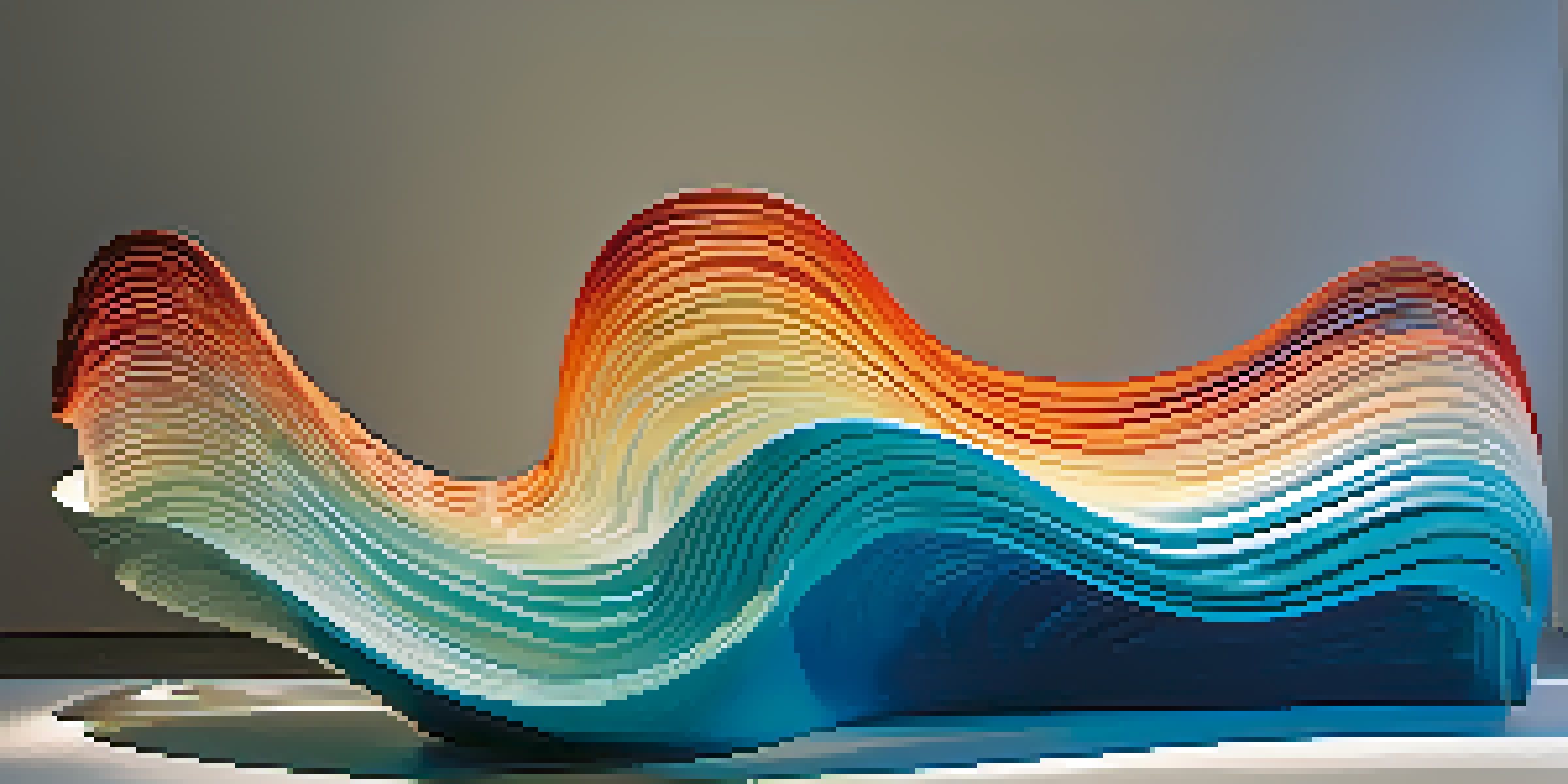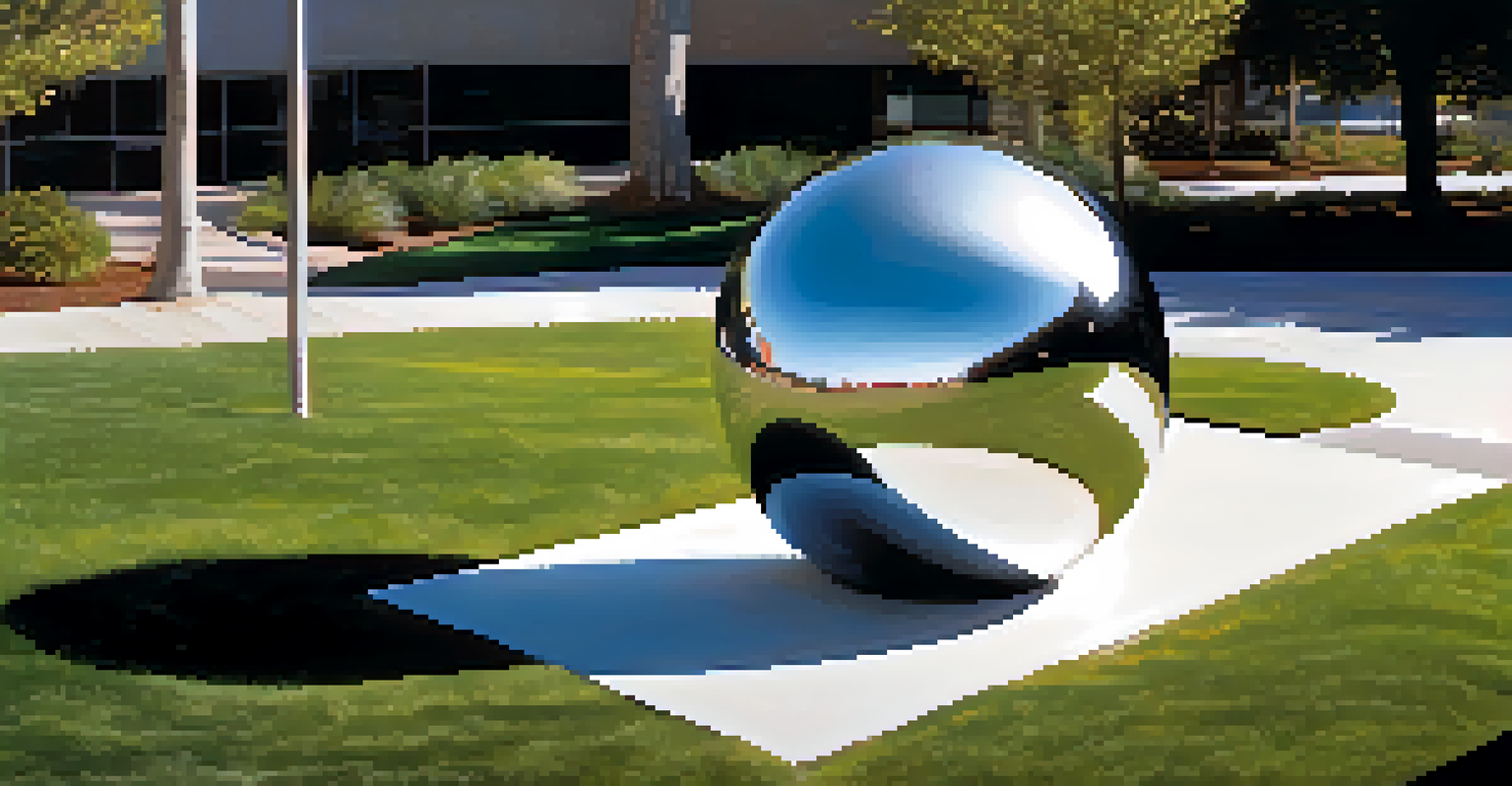Dynamic Carving: Techniques for Interactive Sculptures

Understanding Dynamic Carving in Sculpture
Dynamic carving is an innovative technique that transforms traditional sculpture into interactive art. Unlike static sculptures, dynamic carvings invite viewer interaction, creating a dialogue between the artwork and its audience. This approach not only enhances aesthetic appeal but also deepens the viewer's experience by encouraging physical engagement.
Art is not a mirror held up to reality, but a hammer with which to shape it.
At its core, dynamic carving combines craftsmanship with technology, allowing artists to explore new dimensions in their work. Imagine a sculpture that changes shape or texture when touched, engaging the viewer in an unexpected way. This interplay of art and interactivity offers exciting possibilities for both artists and spectators.
As artists experiment with materials and techniques, the potential for creating immersive environments expands. This evolution in sculpture opens the door to countless creative expressions that resonate with audiences on a personal level, making art not just something to observe, but an experience to be felt.
Materials for Dynamic Carving Techniques
Choosing the right materials is crucial in dynamic carving, as they influence both the artwork's aesthetics and interactivity. Artists often opt for lightweight, flexible materials that can easily respond to touch or environmental changes. Common choices include polymers, wood, and even metals that can be manipulated to achieve the desired effects.

For instance, using a type of thermoplastic allows sculptors to create pieces that can be reshaped with heat. This property adds a layer of interactivity, as viewers can witness the transformation firsthand. By selecting materials that complement the intended interaction, artists can enhance the overall experience of their sculptures.
Interactive Art Enhances Experience
Dynamic carving transforms traditional sculpture into an interactive experience, fostering a deeper connection between the artwork and its audience.
Additionally, incorporating technology such as sensors or motors can elevate the dynamic nature of the piece. These elements can trigger responses based on viewer input, further blurring the lines between art and observer. As artists continue to innovate in material selection, the scope for dynamic carving expands significantly.
Techniques for Creating Interactive Sculptures
Dynamic carving techniques can range from simple modifications to complex mechanical systems. One popular method involves layering materials to create depth and texture, which can be altered with user interaction. This layering can invite viewers to explore various aspects of the sculpture, making the experience richer and more engaging.
The best artist has no conception that a marble block does not contain within itself a statue, but it is the artist's job to bring it to life.
Another approach is to integrate kinetic elements, where parts of the sculpture move in response to viewer actions. Think of a sculpture that rotates or shifts when someone approaches—this not only captivates the audience but also encourages them to interact more. Such techniques can transform a passive viewing experience into an engaging journey.
Lastly, the use of digital technology, like augmented reality (AR), can further enhance interactive sculptures. By overlaying digital elements onto physical artworks, artists can create a multi-layered experience that captivates the audience's imagination. This synergy between the physical and digital realms exemplifies the future of dynamic carving.
Incorporating Technology in Dynamic Carving
The integration of technology in dynamic carving has revolutionized the way artists approach their work. By utilizing sensors, artists can create pieces that respond to the presence or movements of viewers. For example, a sculpture might illuminate or change color as someone walks by, creating a mesmerizing visual experience.
Moreover, programming allows for intricate interactions that can be tailored to specific audiences or environments. Artists can design their sculptures to react differently depending on the time of day or even the emotions of the viewers. This level of customization adds a personal touch to the experience, making art feel more relevant and relatable.
Technology Expands Artistic Possibilities
By integrating technology like sensors and augmented reality, artists can create responsive sculptures that engage viewers in innovative ways.
As technology continues to evolve, the potential for dynamic carving grows exponentially. Artists are now able to explore possibilities that were once thought to be science fiction, merging creativity with cutting-edge innovations. This fusion invites both artists and audiences to explore the endless potential of interactive art.
Case Studies: Successful Dynamic Carvings
Examining successful case studies of dynamic carving can provide valuable insights into the potential of this art form. For instance, renowned artist Anish Kapoor created a piece that utilizes reflective surfaces to engage viewers in a unique way. As people approach, their reflections change, illustrating the dynamic relationship between art and audience.
Another example is the work of artist Kinetic, whose sculptures incorporate movement to create a dialogue with viewers. One particular piece responds to touch, creating ripples that shift the viewer's perspective. This not only captivates but also encourages individuals to reconsider their interactions with art.
These examples demonstrate that dynamic carving is not just a passing trend but a powerful medium for artistic expression. By studying these successful instances, emerging artists can draw inspiration and understand the elements that contribute to effective interactive experiences.
Challenges in Dynamic Carving
While dynamic carving offers exciting possibilities, it also presents unique challenges for artists. One key issue is the balance between technology and art; over-reliance on tech can overshadow the artistic intent. Therefore, finding the right balance is essential to maintain the integrity of the sculpture while still offering interactivity.
Additionally, technical issues can arise, particularly with complex systems involving sensors and motors. Artists must consider maintenance and durability, as sculptures exposed to the elements may require additional care. Addressing these challenges is crucial to ensure the longevity and functionality of the artwork.
Challenges Shape Dynamic Carving's Future
While dynamic carving offers exciting opportunities, artists face challenges in balancing technology with artistic intent and ensuring durability.
Lastly, the cost associated with materials and technology can be a barrier for many artists. However, with creativity and resourcefulness, innovative solutions can be found to create meaningful dynamic sculptures without breaking the bank. Embracing these challenges ultimately leads to growth and exploration in the art of dynamic carving.
The Future of Dynamic Carving in Art
As we look to the future, dynamic carving is poised to evolve in exciting ways. With advancements in technology, artists may find new methods to enhance interactivity and engagement. Imagine sculptures that adapt not only to human interaction but also to environmental factors like light and sound, creating an ever-changing experience.
Moreover, collaborations between artists and technologists will likely continue to flourish. This partnership can lead to innovative projects that push the boundaries of traditional sculpture, merging art with science and engineering. Such collaborations can inspire a new generation of artists who think beyond conventional practices.

Ultimately, the future of dynamic carving holds immense potential for creativity and engagement. As artists explore this realm, the possibilities for interactive sculptures are limited only by their imagination. This exciting journey invites both creators and audiences to participate in a dialogue that redefines the role of art in society.